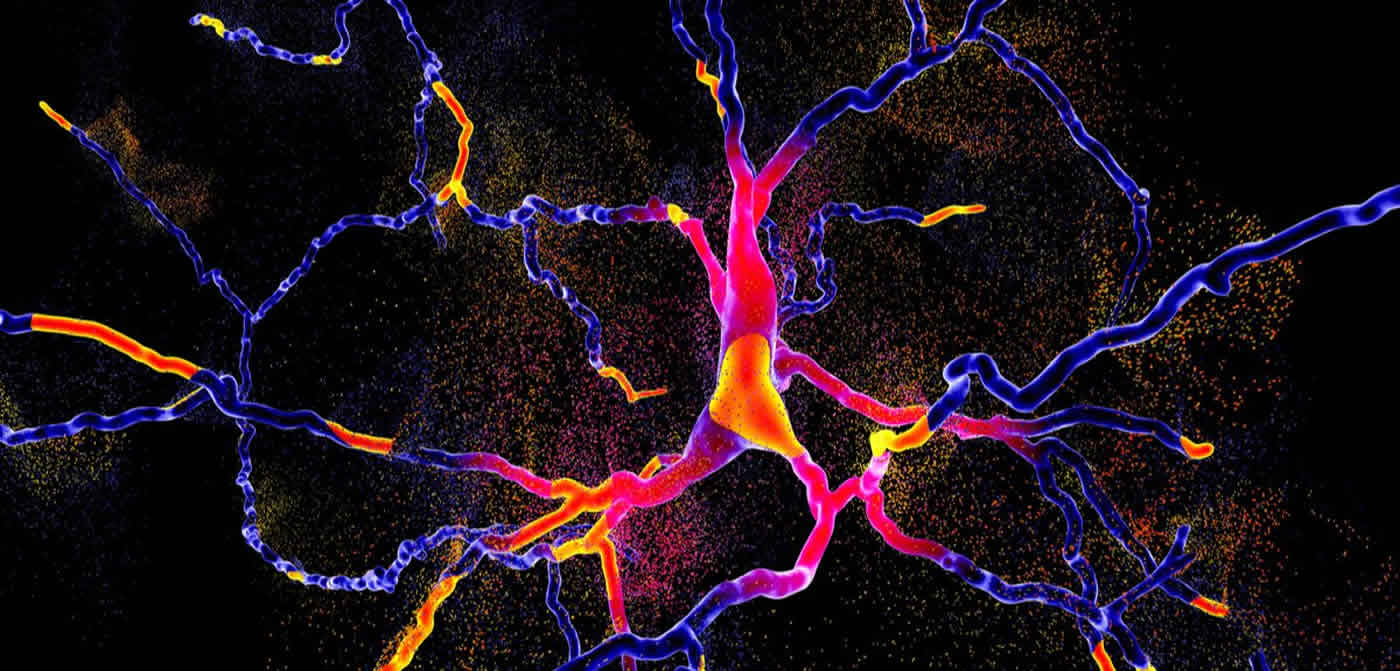Summary: Clioquinol, an anti-parasitic medication, overcomes the effect of mutations in the LRRK2 gene associated with Parkinson’s disease by restoring the acidity of lysosomes and clearing out protein aggregates.
Source: Oxford University
Researchers from Oxford’s Department of Physiology, Anatomy and Genetics (DPAG) have identified how the dysfunction of a key protein, LRRK2, causes the neurons affected in Parkinson’s to lose their ability to effectively clear out cell components that have been damaged. This discovery has enabled the team to find a new way to target and correct this issue, paving the way for a potential new clinical treatment.
Parkinson’s is a motor disorder caused by the loss of a specific sub-set of neurons located in the midbrain. Although the underlying mechanisms leading to the death of these neurons is still not well understood, one of the leading theories is that they die as they accumulate protein aggregates.
Evidence from recent years points to lysosomes, the cellular organelle in neurons responsible for clearing out waste, as a leading culprit for the progression of Parkinson’s. The lysosomes do not work well enough in those with the condition, which causes damaged cell components to build up and clump together.
About 10% of Parkinson’s is genetic, and lysosomes are implicated in the progression of both the inherited condition and in those with no family history of disease. Mutations in the gene LRRK2 are the most common genetic cause of Parkinson’s, and these mutations have been heavily implicated in causing the lysosomes to stop working properly. However, researchers have been trying to ascertain exactly what LRRK2 does for some time and the mechanism by which LRRK2 regulates lysosomal function is still not clear.
In a new study, the Wade-Martins Group has identified for the first time both an important role of LRRK2 and a new way to target its dysfunction therapeutically. Lysosomes need to be acidic to work properly and effectively degrade the waste proteins, and the team’s research demonstrates that LRRK2 regulates the way that lysosomes are acidic. In Parkinson’s, the mutated LRRK2 is not able to perform this function, so lysosomes lose their acidity as a result of LRRK2 dysfunction.
They also found that a drug called clioquinol, currently used as an anti-parasitic drug, overcomes the effect of the mutant LRRK2 and restores the acidity of the lysosome and clears out the protein aggregates. Consequently, the team was able to restore the ability of the lysosomes to “chew up this pathological protein burden” (Prof Wade-Martins) and clear out the protein aggregates that are killing the neurons.

This data identifies a novel mechanism of LRRK2 mutations and ultimately demonstrates the importance of LRRK2 in lysosomal biology, as well as the critical role of the lysosome in Parkinson’s.
Professor Richard Wade-Martins of Oxford’s Department of Physiology, Anatomy and Genetics (DPAG), said: ‘As the population in the United Kingdom gets older, we’re all ageing, the incidence of Parkinson’s is going to increase. We urgently need a better understanding of what causes the disease and then apply that knowledge to develop new therapies, and that is what our work has done. Our work identifies for the first time the very important role of LRRK2 in regulating the acidity and the normal function of the protein recycling centre, the lysosome, and identifies a new way to target this therapeutically in Parkinson’s.’
The successful use of clioquinol to reverse the effects of this mutation highlights the potential of drugs targeting the lysosome in future therapeutics of not only Parkinson’s, but also other neurodegenerative diseases where lysosome dysfunction has been implicated.
The full paper, ‘LRRK2 interacts with the vacuolar-type H+-ATPase pump a1 subunit to regulate lysosomal function,’ can be read in Human Molecular Genetics.
Funding: This research has been joint funded by Parkinson’s UK and a Pitt-Tuckers Fellowship.
Source:
Oxford University
Media Contacts:
Richard Wade-Martins – Oxford University
Image Source:
The image is adapted from the Oxford University news release.
Original Research: Open access
“LRRK2 interacts with the vacuolar-type H+-ATPase pump a1 subunit to regulate lysosomal function”. Rebecca Wallings, Natalie Connor-Robson, Richard Wade-Martins.
Human Molecular Genetics. doi:10.1093/hmg/ddz088
Abstract
LRRK2 interacts with the vacuolar-type H+-ATPase pump a1 subunit to regulate lysosomal function
Lysosomal dysfunction lies at the centre of the cellular mechanisms underlying Parkinson’s disease although the precise underlying mechanisms remain unknown. We investigated the role of leucine rich repeat kinase 2 (LRRK2) on lysosome biology and the autophagy pathway in primary neurons expressing the human LRRK2-G2019S or LRKK2-R1441C mutant, or the human wild-type (hWT-LRRK2) genomic locus. The expression of LRRK2-G2019S or hWT-LRRK2 inhibited autophagosome production, whereas LRRK2-R1441C induced a decrease in autophagosome/lysosome fusion and increased lysosomal pH. In vivo data from the cortex and substantia nigra pars compacta of aged LRRK2 transgenic animals revealed alterations in autophagosome puncta number reflecting those phenotypes seen in vitro. Using the two selective and potent LRRK2 kinase inhibitors, MLi-2 and PF-06447475, we demonstrated that the LRRK2-R1441C-mediated decrease in autolysosome maturation is not dependent on LRRK2 kinase activity. We showed that hWT-LRRK2 and LRRK2-G2019S bind to the a1 subunit of vATPase, which is abolished by the LRRK2-R1441C mutation, leading to a decrease in a1 protein and cellular mislocalisation. Modulation of lysosomal zinc increased vATPase a1 protein levels and rescued the LRRK2-R1441C-mediated cellular phenotypes. Our work defines a novel interaction between the LRRK2 protein and the vATPase a1 subunit and demonstrates a mode of action by which drugs may rescue lysosomal dysfunction. These results demonstrate the importance of LRRK2 in lysosomal biology, as well as the critical role of the lysosome in PD.






